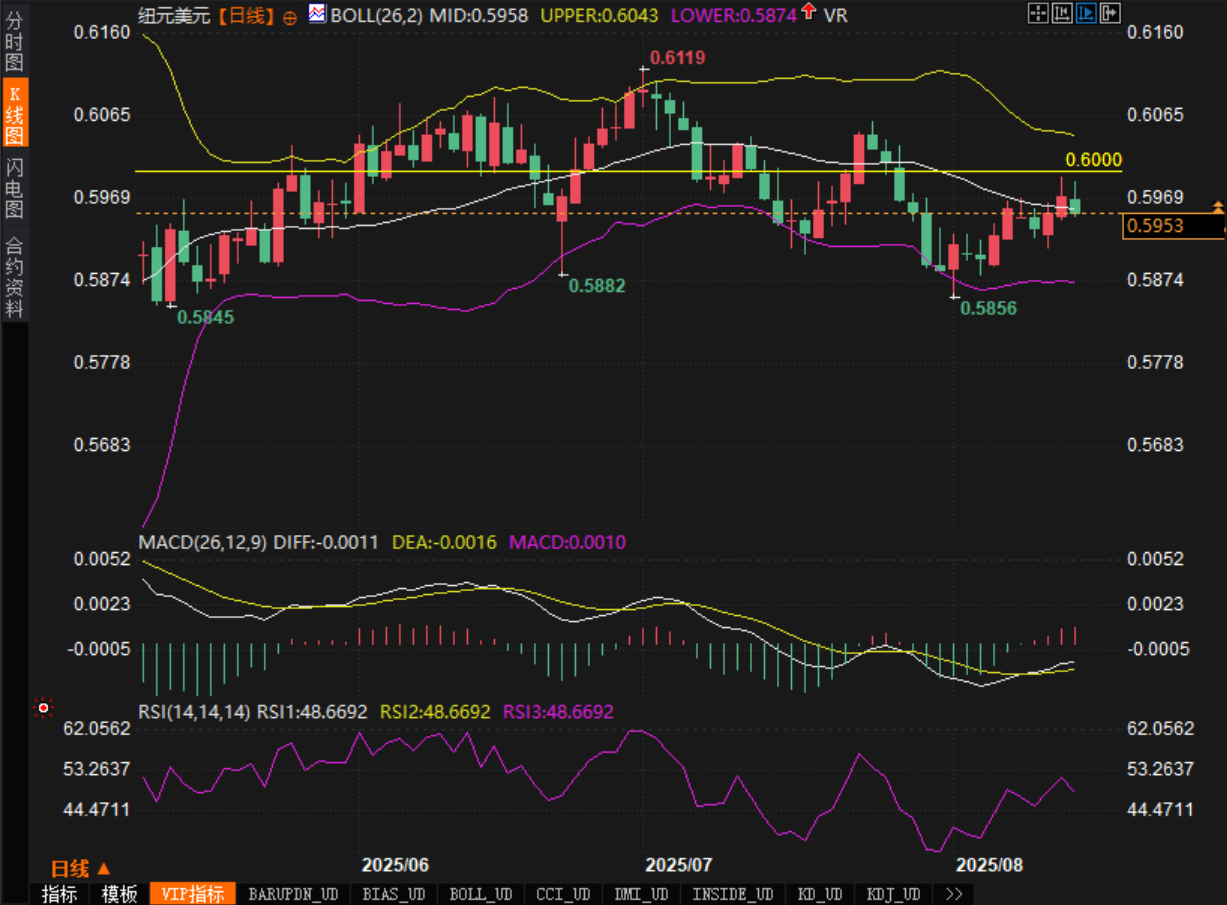Will the September Fed decision be a turning point for NZD/USD?
2025-08-14 17:56:15

The US dollar rebounded slightly after the CPI report, but the overall rise lacked clear fundamental support and mainly reflected market repositioning ahead of the US Producer Price Index (PPI) report. At this time, the market's widespread expectations for a Fed rate cut have not diminished, and the US dollar's rebound may be temporary.
In contrast, the New Zealand dollar (NZD) has seen no significant fundamental shifts. Last week's labor market report was largely in line with expectations, with no significant impact on Reserve Bank of New Zealand (RBNZ) rate cut expectations. Market expectations remain for a 42 basis point rate cut by year-end, with a 94% probability of a rate cut at the upcoming meeting.
Fundamentals
The US dollar (USD) came under some pressure following the latest CPI report. While the data was in line with expectations, it failed to dampen market expectations of a September Federal Reserve rate cut. Market expectations of a 60 basis point rate cut by the end of the year have bolstered market confidence in a future rate cut. As expectations of a Fed rate cut intensify and market confidence in a rate cut grows, the USD's rebound appears weak.
In contrast, the New Zealand dollar (NZD) faces relatively stable fundamentals. The only significant data release was last week's labor market report, which generally met market expectations. Markets still expect the Reserve Bank of New Zealand to cut interest rates by 42 basis points by year-end, with a 94% probability of a rate cut at the upcoming meeting (next week). This suggests that despite a brief rebound in the New Zealand dollar amid pressure from the US dollar, its overall upward momentum is unlikely to be sustained unless there are stronger supportive factors.
Technical aspects
NZD/USD has encountered some pressure around the 0.6000 psychological level and has retreated, currently trading at 0.5950, breaking a two-day upward trend. The current price action suggests that the market has a strong inhibitory force against the 0.6000 resistance level.

Bollinger Bands Analysis: Prices are currently near the middle Bollinger Band, indicating that the market is still in a consolidation phase. The band width is relatively stable and not overextended, indicating that market volatility is still within normal ranges. A breakout above the upper Bollinger Band could drive further gains, while a reversal to the lower band is possible.
RSI and MACD Indicator Analysis: The RSI is currently near 48.67, in neutral territory, indicating uncertainty about the exchange rate's direction and neither overbought nor oversold. The MACD line is narrowly separated from its signal line, suggesting weak short-term market momentum and a lack of a clear trend.
Support and Resistance: Short-term support is around 0.5930, while resistance is at 0.6000. If the price breaks through 0.6000, it may face the next important resistance level of 0.6119.
Market Sentiment Observation
US Dollar Index (DXY): The US dollar index experienced a slight rebound. Although the rebound was not strong, it still exerted some downward pressure on the NZD/USD pair. The market generally expects the Federal Reserve to cut interest rates in September, so the dollar's strength may not last long. The market's expectation of a Fed rate cut is likely to continue to support the NZD/USD pair.
NZD sentiment: Market sentiment is relatively optimistic, especially as geopolitical relations have eased slightly, risk appetite has improved.
Market Outlook
Bullish Outlook: If NZD/USD can break through the psychological resistance level of 0.6000, it may rise further and test the overhead resistance area of 0.6119. In this case, traders may pay attention to whether the Federal Reserve further confirms the expected rate cut, which may provide momentum for the rise of NZD/USD.
Bearish Outlook: If the price fails to break through 0.6000 and continues to consolidate around 0.5950, it may trigger further declines. In the short term, the US dollar may exert downward pressure on the New Zealand dollar due to market rebalancing.
Long-term outlook: Although there are some uncertainties in the short term, considering the expectations of the Fed's interest rate cuts and the market's appetite for risk, in the long run, NZD/USD may maintain its upward trend.
Conclusion: Combining fundamental and technical analysis, we believe the market is currently in a critical phase of technical consolidation. Despite some short-term pressure, particularly at the 0.6000 resistance level, the overall trend remains likely to break through and move upward. Traders should monitor the upcoming US PPI data and the Federal Reserve's speech to adjust their trading strategies accordingly.
- Risk Warning and Disclaimer
- The market involves risk, and trading may not be suitable for all investors. This article is for reference only and does not constitute personal investment advice, nor does it take into account certain users’ specific investment objectives, financial situation, or other needs. Any investment decisions made based on this information are at your own risk.





















